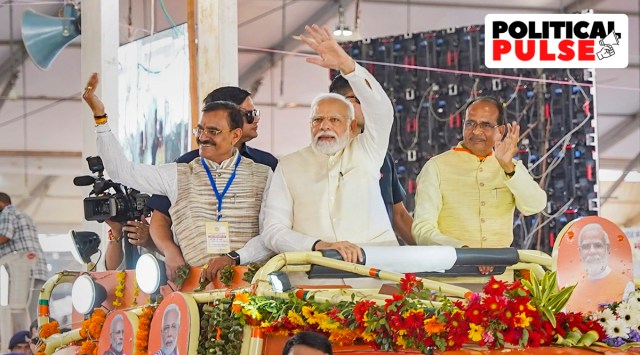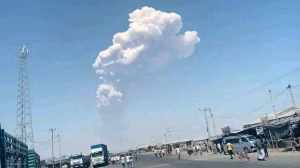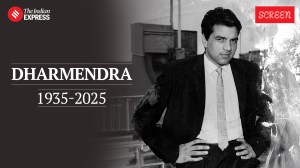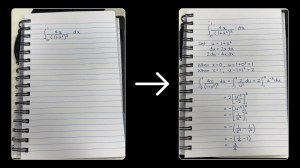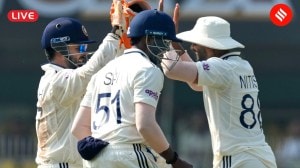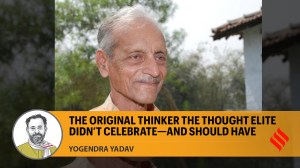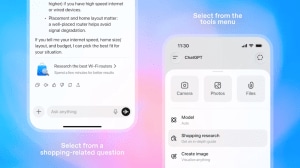The early visits of Prime Minister Narendra Modi to the poll-bound states of Madhya Pradesh, Chhattisgarh and Rajasthan indicate a clear pattern — the PM connecting directly with the crowd and party workers and asking for votes for the BJP rather than regional leaders.
At a rally in Rajasthan’s Chittorgarh on Monday, Modi said the party would contest the Assembly election on its “lotus” symbol. In Chhattisgarh’s Bilaspur two days earlier and in Jaipur, Rajasthan, last Monday, former chief ministers Raman Singh and Vasundhara Raje did not even speak though they were present on the dais in their respective states. In Bilaspur, Modi did mention Raman Singh a few times when he addressed the gathering but in the context of his time as CM. In Madhya Pradesh last Monday, Chief Minister Shivraj Singh Chouhan spoke for just a few minutes but the PM did not acknowledge him by name during his speech, choosing to address those on the dais and those in the crowd as a collective.

The optics of the rallies are a clear indicator of the party’s strategy of not projecting a regional leader. The “Mama Shivraj (maternal uncle Shivraj)” songs that once marked the party’s poll campaigns in Madhya Pradesh gave way to “MP ke dil mein Modi, Modi ke dil mein MP (MP has Modi in its heart; Modi has MP in his heart)” song in Bhopal.
The PM entered the rally venue in an open vehicle in Bilaspur, Bhopal, and Jaipur, converting the entries into roadshows that immediately created a direct connection with the crowd. The others were already on the stage by then, with just one leader accompanying Modi. “When my vehicle passes by you, I can see some old faces and wave to them and also sense your energy,” Modi told the crowd in Bilaspur.
The time the PM spent speaking was much longer than the only state leader who spoke in his presence. In Bilaspur, it was state president and local MP Arun Sao who spoke before Modi even as Raman Singh sat in the audience.
Modi also engaged party workers directly at the rallies, speaking of himself in the third person several times. He threw questions at the audience and urged them to answer these, pointing to various sections of the crowd. The strategy generally works as the crowds respond to the PM in a mass chant of sorts.
In Bilaspur, Modi told the crowd that the party’s lotus symbol was their only leader and candidate, thus suggesting that these questions were subject to the party’s decision and that workers should not think about them. Exhorting them to go out and mobilise support for the BJP, he pointed towards one section of the crowd after another, asking, “Aap jaayenge (will you do this)?” A resounding “haan (yes)” was heard from each side.
Story continues below this ad
After this, Modi turned towards the leaders sitting on stage and asked them, “Aap jaayenge (will you do this)?” All of them raised their hands and said in unison, “Yes.” The PM then turned towards the crowd and said, “They are also ready.” The gesture put the leadership on the dais and the party workers in the crowd in a horizontal relationship as people working for the party symbol.
With these Assembly elections — and also the Telangana polls — being important as they come just before the Lok Sabha polls, the collective leadership pitch, rather than projecting one state leader, has been accompanied by a move such as fielding Union Ministers in Madhya Pradesh. In Rajasthan, MP, and Chhattisgarh, the BJP is locked in a direct contest with the Congress that counts established regional leaders in its ranks.
While the Congress has a leader of Ashok Gehlot’s stature to project in Rajasthan and Bhupesh Baghel in Chhattisgarh, the BJP is showcasing PM Modi as the leader directly connecting with party workers. State leaders, meanwhile, are being shown as participants in the process with no specific projection. With party big guns being fielded in Assembly constituencies in a carpet-bombing exercise, the strategy is in sync with the horizontality of the optics.

